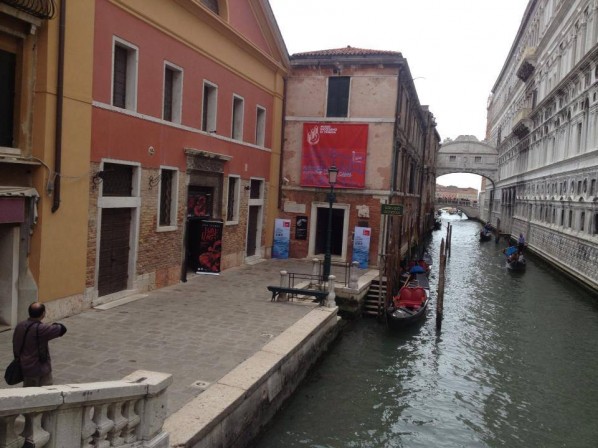
“Grand Canal”, Collateral Event of the 55th International Art Exhibition – La Biennale di Venezia, opened on 1 June 2013 in the Museo Diocesano dell’Arte Sacra on the banks of the Grand Canal in Venice, which will be on view until November 24th. Twelve renowned Chinese artists were invited to participate, by independent curator and artist Ms Xiao Ge. Zhang Yanzi took the opportunity to talk with Xiao Ge about the stories behind the exhibition.
About the Curator
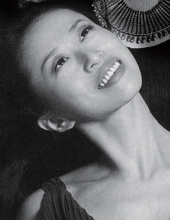 Xiao Ge, an artist and curator, was born in an art family of Shanghai in 1971. She graduated from Middle School Affiliated to China Academy of Art and then the Printmaking Department of Central Academy of Fine Arts. In late 1995, Xiao went to France and successively studied in Universite De Provence Aix-Marseille, Oil Painting and Inter Media Art Department ofécole nationale supérieure des Beaux-arts de Paris, Ecole De La Chambre Syndicale De La Couture Parisienne and International Cultural Exchange Department of Université de Vincennes à Saint-Denis, where she received double bachelor’s degrees and double master’s degrees. Xiao returned to China in 2009 and now she lives and works in Beijing.
Xiao Ge, an artist and curator, was born in an art family of Shanghai in 1971. She graduated from Middle School Affiliated to China Academy of Art and then the Printmaking Department of Central Academy of Fine Arts. In late 1995, Xiao went to France and successively studied in Universite De Provence Aix-Marseille, Oil Painting and Inter Media Art Department ofécole nationale supérieure des Beaux-arts de Paris, Ecole De La Chambre Syndicale De La Couture Parisienne and International Cultural Exchange Department of Université de Vincennes à Saint-Denis, where she received double bachelor’s degrees and double master’s degrees. Xiao returned to China in 2009 and now she lives and works in Beijing.
As an active artist, Xiao has her works represented in France, Italy and China, covering a various forms such as painting, installation and performance. Her main exhibitions include “Hour Rate-Xiao Ge’s Art Exhibition” in International City of Arts (Cité Internationale Des Arts) in Paris, France in 2000, “Parallel World: Lille-Shanghai Express Train” in EU Extravaganza 2004, “International Art Saloon” in Florence, Italy in 2006 and periphery event “Between East and West”of 52nd Venice Biennale 2007.
From 2005 to 2008, Xiao Ge was engaged as a director to the Italian Center in China and participated in planning several international cultural exchange projects. She served as a press officer to “Shanghai Art Fair International Contemporary Art Exhibition” in Asia Pacific region in 2009, and planned the “Warm Winter Project” from 2009 to 2010 as a chief curator, which was called the “biggest event in Chinese contemporary art of 2009” by the mass media and historian. In 2011, Xiao took up the post of vice president to “China Contemporary Art Foundation” and has planned a series of events and exhibitions; then she serves as head of preparatory committee and director of Xiao Feng and Song Rens’ Art Museum in 2012. In the same year, Xiao was invited as a special guest curator for “Zhongshan Park Project” of 9th Shanghai Biennale 2012, and co-curated “On the Way Home – Shanghai Pudong International Airport Special Exhibition.”
About artist Zhang Yanzi
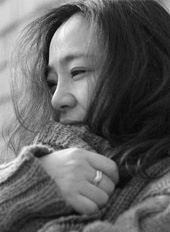
MFA in the Chinese Painting Department, Chinese Central Academy of Fine Arts, China
MFA in Modern Ink-colour Figure Painting, Department of Fine Arts, Capital Normal University, China
Now staff member in Chinese Central Academy of Fine Arts, China
Her work has been included in exhibitions such as: the 10th National Art Exhibition, 2005; the 2nd Beijing International Art Biennale, 2005; the 5th Traditional Chinese Painting Exhibition, 2007; Jinling Painting Exhibition of One Hundred Chinese Artists, 2007; Edinburgh Art Festival, 2011; the Cheju International Art Exhibition, 2011; Self-Image: Woman Art in China(1920-2010) Thematic Exhibition at CAFA Art Museum, 2011; Tour Exhibition of Contemporary Female Artists organized by Tree Museum, 2012; and Recurrence of Ink and Wash: 2000-2012 Chinese Contemporary Ink and Wash Invitation Exhibition, 2012.
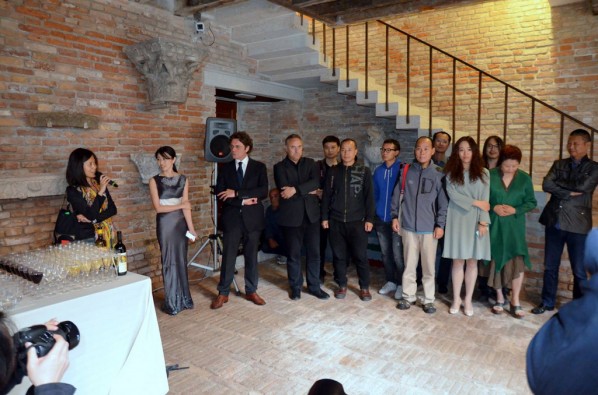
Zhang Yanzi: Being one of the most prominent art events worldwide, Venice Biennale has a profound impact in different countries. So you, as a curator who is a part of this exhibition, would you like to tell us about the original intention of The Great Canal and the whole progress of this exhibition.
Xiao Ge: Actually, the whole idea of this exhibition was derived from my father’s hometown, Yangzhou, which is located at the very start of the Grand Canal and the inscription headquarters of the Grand Canal is there. At that time the inscription center of the Grand Canal hoped that my father could make some recommendations. From the perspective of an artist, he proposed that an exhibition should be curated to mobilize community support for the inscription of the Grand Canal. His idea was to have touring exhibitions of Chinese calligraphy, but since he is getting older, I’m the one who needs to carry out the operation. I have lived abroad for over ten years and I have often attended the Venice Biennale. To tell the truth, a collateral event of the 55th International Art Exhibition - La Biennale di Venezia is hard to apply for. My two options were rejected when I applied on behalf of the Chinese Contemporary Fund. Although I have curated a few exhibitions, this is the first time for me to submit this form of application to the list of world heritage. The inscription of this programme seemed more suppositional at the very beginning, according to my previous experience, I had little confidence in being included. The real beginning of the preparatory work for this exhibition started at the end of June, but all the works needed to be shipped at the end of March, so I needed to find funding and artists within a short period. It’s a tense schedule for me.

Zhang Yanzi: May I ask from which perspective did you consider to invite these artists?
Xiao Ge: First of all, I think avant-garde artists should possess an experimental and exploratory character. So, when I was looking for an artist, I did not take commercial popularity into account, I hope it displays diversity. We have artists who present installation, video, performance, as well as traditional art like Zhang Yanzi’s Chinese painting, presenting the traditional in a very contemporary way with installation.
Zhang Yanzi: Are there some works you think best embody the concept of this exhibition? Would you briefly introduce them to us?
Xiao Ge: This exhibition is kind of like a thesis with a tight schedule. I am particularly grateful to Xu Bing, Qiu Zhijie, Zhang Yanzi and other artists who specially created new works for this exhibition.
I would like to talk about Xu Bing’s work first, actually he uses the water of the Grand Canal to write “The Grand Canal” on the rice paper, conveying the expression of a response in a natural way. Canal culture is an ancient civilization that has now disappeared, but it left some traces in some places. Calligraphy written with canal water will fade slowly and disappear along with time, uneven marks will leave on the paper. He recorded the whole progress through video and projected it onto the calligraphy installation. I think this idea is quite similar to his previous work “Where Does the Dust Itself Collect?” It’s a Zen thing, emphasizing issues with the beauty of calligraphy and complying with the way of nature.
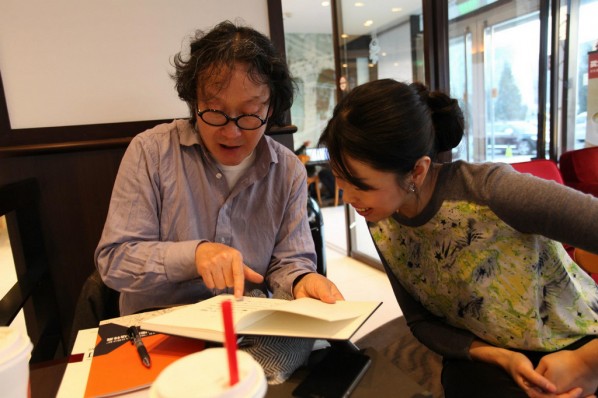
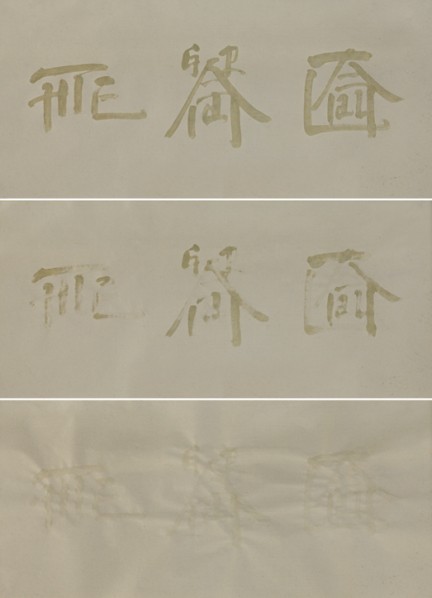
Xu Bing, The Grand Canal, 2013; Water, rice paper, video, 97cm×180cm, Photography Xu Bing's studio in Beijing © Xu Bing
As for Qiu Zhijie, actually from the very beginning, he wanted to send his work “Regulating Rivers and Watercourses” which have been exhibited on the Shanghai Biennale, to Venice, since he believed that Chinese history was closely related with water-control. But that device was damaged, he changed it into “Canal Transportation” instead. He felt that the canal did not dredge up civilization but spread politics and economics. He did not interpret his new work by himself, this is my understanding.

Qiu Zhijie and His Work "Canal Transportation"
As for Xiao Lu, she has been creating some works on detoxifying the body. She uses essential oils and a Taoist massage to clear the body, the toxins emitted droplets on the paper which constitute her work. Since the canal has been dredged before applying for the world heritage, she linked the canal sequence with a human skeleton. For her exhibition in Venice, she planned a performance: she collected some mud from the canal at Tongzhou in Beijing, then she invited an Italian to wash the mud with the water of Venice.
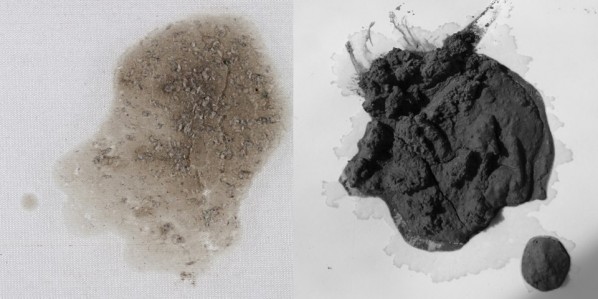
Xiao Lu, Toxin (installation), 2011-2013
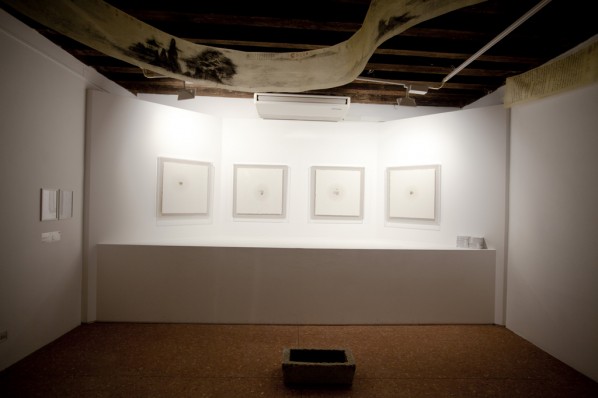
Installation View of Toxin
The Irrelevant Commission, or Irrelevant Group, a collective of young artists which tends towards intense social engagement, has been doing some social investigation. The team went to different places along the Grand Canal and collected local rubbish and local goods, then wove them into a canal-style trope. Combining with pictures and videos of social investigation they took during their journeys, they made this “symbiosis” installation. And I have to say, from the arrangement of the exhibition to the actual operation, they contributed a lot. I was very grateful.
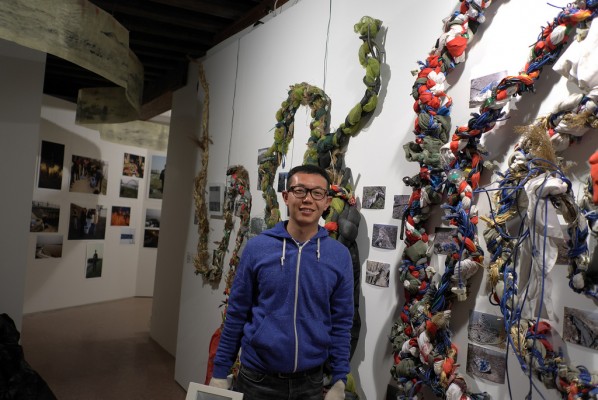
Guo Lijun from Irrelevant Committee, Living Together, 2013
Bai Chongming’s work looks upon the motif of the Grand Canal from a different perspective. Inconvenience in ancient communication produces a loss and longing feeling in people who need to keep an appointment as they need to go a long way. This feeling disappeared gradually with the birth of modern civilization. His work “Running a Thousand Miles to Keep an Appointment” has brought a very poetic human feeling to the exhibition. He took a goose feather from Beijing and walked over two hundred and forty days to Yunnan with friends to keep an appointment.
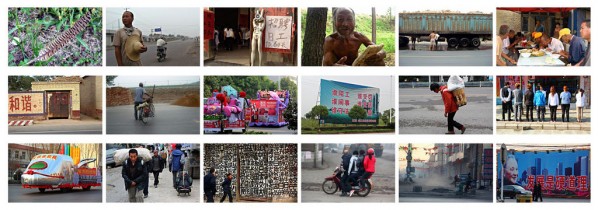
Bai Chongmin, Running A Thousand Miles for An Appointment, June 16, 2011 -February 15, 2012.
As for Zhang Yanzi’s work, she presents her work in a very unique way, like a heavenly river cascading throughout the entire exhibition. An untraditional installation produced in a traditional way, all of the seals are acupuncture points and all the texts are quoted from the Emperor’s Canon on Medicine. Various elements are put into this installation, producing a collision of something new. This year’s theme centers around the affectionate side of tradition in all the things today. From this sense, her work is actually very consistent with the theme.

Installation View of Zhang Yanzi's The Flow of Energy(Qi) 01
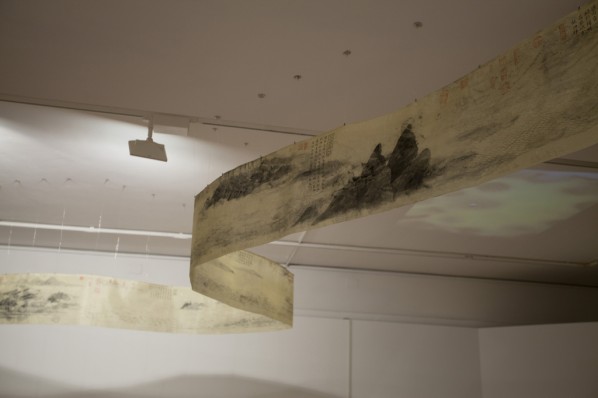
Installation View of Zhang Yanzi's The Flow of Energy(Qi) 02
Courtesy CAFA ART INFO
Image Courtesy The Grand Canal


